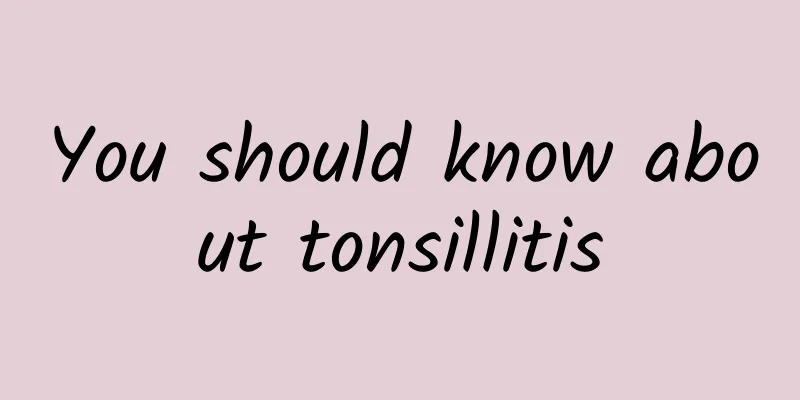"Head-down tribe" should be alert to cervical spondylosis

|
With the rapid development of smart phones, a new group of people has emerged - the "head-down tribe". However, the "head-down tribe" should be alert to cervical spondylosis. Cervical spondylosis is a disease based on degenerative pathological changes. It is mainly caused by long-term strain of the cervical spine, bone hyperplasia or disc herniation, ligament thickening, which causes compression of the cervical spinal cord, nerve roots or vertebral arteries, resulting in a series of clinical syndromes of functional disorders. 1. Cause (1) Causes of the disease. Due to cervical vertebrae degeneration, the nucleus pulposus and annulus fibrosus dehydrate and degenerate, which directly stimulate the nerve endings of the sinus vertebrae and cause the disease. (2) Pathogenesis. In the early stages of cervical degeneration, the main manifestations are dehydration of the nucleus pulposus and annulus fibrosus, degeneration and decreased local tension of the vertebral segment, which in turn causes loosening and instability of the intervertebral space. The patient's symptoms often suddenly worsen in the morning, after overwork, improper posture and cold stimulation. The instability of the vertebral segment not only causes local internal and external imbalance of the cervical spine and defensive spasm of the cervical muscles, but also directly stimulates the sinus nerve endings distributed in the posterior longitudinal ligament and the root sleeves on both sides, causing neck symptoms. At this time, most of them manifest as local pain, neck discomfort and limited movement. In a few cases, there may be transient upper limb (or hand) symptoms due to reflex action, and the range is consistent with the affected vertebrae. When the body establishes a new balance in the neck through adjustment and compensation, the above symptoms gradually disappear. Therefore, most cases may heal themselves, or only general measures can be taken to relieve the symptoms or even eliminate them. 2. Clinical symptoms (1) Cervical type: occipital and cervical pain, limited neck movement, stiff neck muscles, and corresponding tenderness points. (2) Radiculopathy: Neck pain accompanied by radiating pain in the upper limbs, which worsens when the neck is extended. The skin segment distribution area of the compressed nerve root has weakened sensation, abnormal tendon reflexes, muscle atrophy, decreased muscle strength, limited neck movement, and positive traction test and head pressure test. (3) Spinal cord type: In the early stage, the lower limbs become tight and walking is unstable, as if walking on sand. In the late stage, one side of the lower limbs or all four limbs become paralyzed, and there is incontinence or urinary retention. There is sensory impairment below the compressed spinal cord segment, increased muscle tone, hyperreflexia, and positive vertebral tract signs. (4) Vertebral artery type: headache, dizziness, tinnitus, deafness, blurred vision, postural cataplexy, and symptoms that worsen when the cervical spine is scoliotically bent and extended. (5) Sympathetic nervous system type: weak eyelids, blurred vision, dilated pupils, eye socket pain, tearing, headache, migraine, dizziness, occipital and cervical pain, tachycardia or bradycardia, precordial pain, increased blood pressure, cold limbs or red and hot fingers, excessive or insufficient sweating on one side of the limbs, etc. (6) Mixed type: The above types of cervical spondylosis often occur together. 3. Home exercise methods for cervical spondylosis (1) Start with idioms Idioms such as "looking up and down, shaking the head, looking left and right, looking around, looking ahead and behind, scratching the ears and cheeks, and holding the head high" all contain medical knowledge about protecting the neck. In work and life, you may as well do these beneficial movements often, which can inadvertently relax the neck muscles, prevent muscle and ligament strain and joint cartilage degeneration, and keep the cervical joints well maintained. It can also stimulate acupuncture points to relieve fatigue and mental tension. For example, "scratching the ears and cheeks" has 91 acupuncture points on the auricle that correspond to various parts of the human body, so stimulating the ear points related to the disease can also have a certain effect on relieving cervical symptoms. (2) Use a cervical pillow The height of the cervical pillow should be about the height of a fist or slightly higher, about 10-12 cm. Generally, it can be used for 0.5-1 hour before going to bed at night, and then replaced with a normal pillow such as a buckwheat pillow or a cassia seed pillow. In addition, it can be used at any time during the day for a short rest. Use 1-2 times a day. (3) Head-holding training method When you feel a sore neck during work, you should raise your head, straighten your chest, hold the back of the headrest with both hands and try to stretch your head back, so that the cervical spine can do resistance exercises backwards, do 15-20 times each time, 2-3 times a day. This action can prevent muscle atrophy, improve the strength of the back neck muscles, and help restore the physiological curvature of the cervical spine. (4) Perform jaw lift Regularly doing the jaw-lift exercise is a very simple self-traction method to relax the neck muscles and improve the cervical curvature. During breaks at work, sit upright, close your eyes, hold your lower jaw on both sides with your hands, support your elbows on the table, and continue to lift your head and neck upward and backward for about 3-5 minutes each time, and do it 3-4 times a day. Lift your head and stand upright against the wall for 5-10 minutes, with your arms hanging naturally, raise your head and stretch your neck, straighten your chest and abdomen, stand on tiptoes from time to time, breathe naturally and calmly, and keep your neck, chest and lumbar spine in a straight line. Doing this exercise frequently can correct bad posture of bowing your head and flexing your neck, and relieve cervical flexion. (6) Keep your neck warm When the neck is stiff and uncomfortable, you can use a hot water bottle for warm compress. In autumn and winter, pay special attention to keeping the neck warm in the morning and evening. When going out, you should wear a scarf or high-necked clothes to avoid the neck from being attacked by wind and cold. Summary: It is calculated that when you lower your head 60 degrees, the pressure on the cervical spine is as high as 45 kilograms, which is equivalent to having the weight of a 6 or 7-year-old child hanging on your neck at all times. People who "lower their head" should pay attention to using the 6 methods of home exercises for cervical spondylosis in their daily lives to prevent cervical spondylosis from getting to you. Author: Wang Hao Huanghua People's Hospital |
<<: Children with dental deformities, early intervention is more effective
Recommend
Don’t want to drink milk? Try these “milk substitutes” →
For most people of this generation, the main sour...
Just eat yogurt like this and lose 6 pounds in three days!
Losing weight by eating yogurt is a method that m...
Can I soak my feet if I have pelvic inflammatory disease?
Nowadays, various gynecological diseases are ofte...
What causes uterine prolapse?
Uterine prolapse is a very common phenomenon. For...
The reason why little girls have spots on their faces
The child is still young, and his skin should be ...
What are the dangers of wearing tight underwear?
Women should pay special attention to their under...
What causes swollen and itchy vulva?
If a woman's vulva becomes swollen and accomp...
What are the early symptoms of cervical cancer?
Cervical cancer is a common gynecological cancer ...
Let the angel smile from the "heart": scientific publicity for caring for patients with Vanderwood syndrome
Let the angel smile from the "heart": s...
Tracking 450,000 people found that people with these 5 lifestyles live longer!
Not long ago, scholars from Peking University ana...
What are the small bumps on the labia?
Some female friends accidentally find small bumps...
What to do if the vulva is itchy and has brown discharge
There are many reasons for vulvar itching, genera...
The impact of humidity on breast milk
Many women who are breastfeeding have heavy moist...
Why does a pregnant woman's face itch due to allergies?
Pregnancy is very different from normal life, and...
How can women protect their liver?
The liver is one of the most important organs in ...









